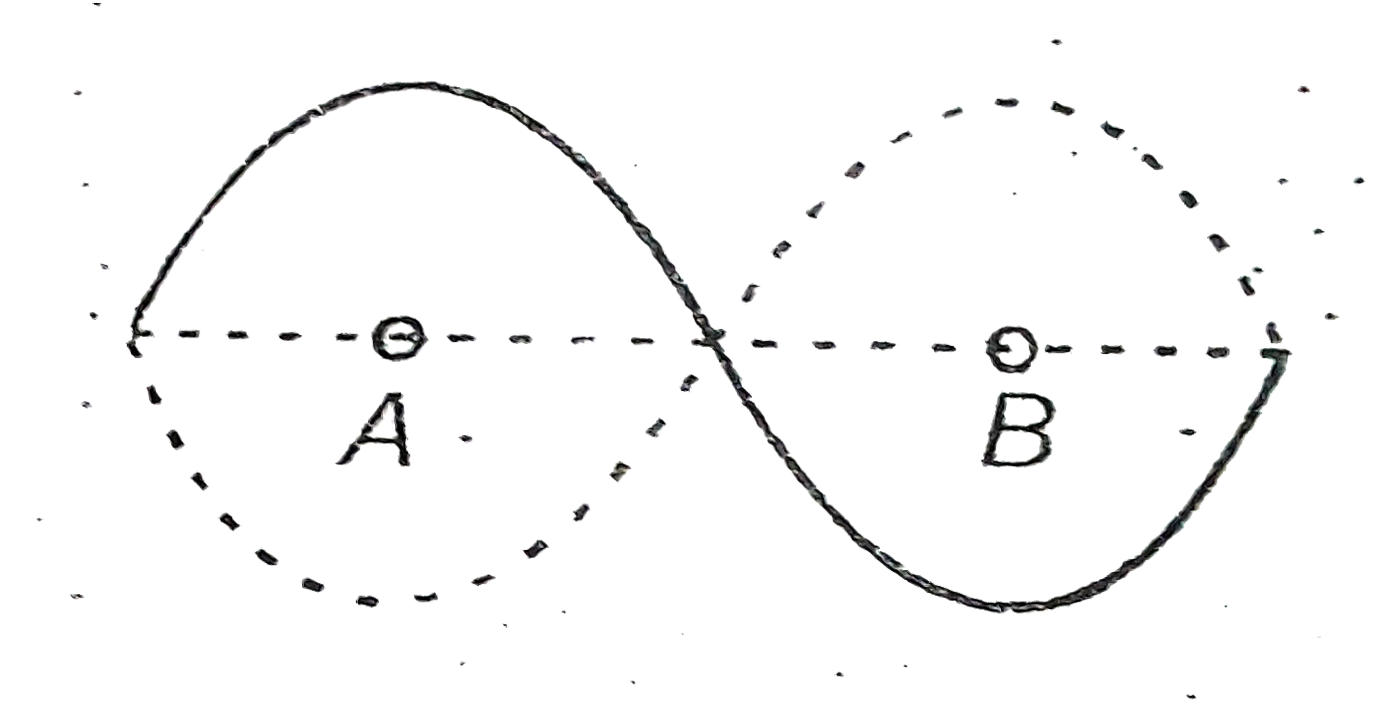(A): In a harmonic progressive wave of a given frequency all particles have the same amplitude but different phases at a given instant of time.
(B) : In a stationary wave, all particles between two nodes have the same phase at a given instant but have different amplitudes.
Both A and B are true
Both A and B are false
A is true, B is false
A is false, B is true
The correct Answer is:A
To analyze the statements (A) and (B) regarding harmonic progressive waves and stationary waves, we can break down the concepts step by step.
Step 1: Understanding Harmonic Progressive Waves
A harmonic progressive wave is characterized by:
- Same Amplitude: All particles in the wave oscillate with the same maximum displacement from their equilibrium position.
- Different Phases: At any given instant, particles at different positions along the wave have different phases of oscillation. This means they reach their maximum and minimum displacements at different times.
Step 2: Evaluating Statement (A)
Statement (A) claims:
- "In a harmonic progressive wave of a given frequency all particles have the same amplitude but different phases at a given instant of time."
- This statement is True because it accurately describes the nature of harmonic progressive waves.
Step 3: Understanding Stationary Waves
A stationary wave (or standing wave) is characterized by:
- Nodes and Antinodes: Points where the wave has zero amplitude (nodes) and points where the amplitude is maximum (antinodes).
- Same Phase Between Nodes: All particles between two consecutive nodes oscillate in phase, meaning they reach their maximum and minimum displacements simultaneously.
Step 4: Evaluating Statement (B)
Statement (B) claims:
- "In a stationary wave, all particles between two nodes have the same phase at a given instant but have different amplitudes."
- This statement is also True because particles between nodes oscillate in phase, but their amplitudes vary, being maximum at the antinodes and zero at the nodes.
Conclusion
Both statements (A) and (B) are true based on the definitions and characteristics of harmonic progressive waves and stationary waves.
Final Answer
- (A) is True.
- (B) is True.
---
A harmonic progressive wave is characterized by:
- Same Amplitude: All particles in the wave oscillate with the same maximum displacement from their equilibrium position.
- Different Phases: At any given instant, particles at different positions along the wave have different phases of oscillation. This means they reach their maximum and minimum displacements at different times.
Statement (A) claims:
- "In a harmonic progressive wave of a given frequency all particles have the same amplitude but different phases at a given instant of time."
- This statement is True because it accurately describes the nature of harmonic progressive waves.
A stationary wave (or standing wave) is characterized by:
- Nodes and Antinodes: Points where the wave has zero amplitude (nodes) and points where the amplitude is maximum (antinodes).
- Same Phase Between Nodes: All particles between two consecutive nodes oscillate in phase, meaning they reach their maximum and minimum displacements simultaneously.
Statement (B) claims:
- "In a stationary wave, all particles between two nodes have the same phase at a given instant but have different amplitudes."
- This statement is also True because particles between nodes oscillate in phase, but their amplitudes vary, being maximum at the antinodes and zero at the nodes.
Both statements (A) and (B) are true based on the definitions and characteristics of harmonic progressive waves and stationary waves.
- (A) is True.
- (B) is True.
Topper's Solved these Questions
- BOOK - AAKASH SERIESCHAPTER - WAVESEXERCISE - EXERCISE-IA (Matching )4videos
WAVES
- BOOK - AAKASH SERIESCHAPTER - WAVESEXERCISE - EXERCISE-IB (Assertion (A) & Reason (R) Type Questions)72videos
WAVES
- BOOK - AAKASH SERIESCHAPTER - WAVESEXERCISE - EXERCISE-IA (Theoretical questions :)85videos
WAVES
- BOOK - AAKASH SERIESCHAPTER - WAVE OPTICSEXERCISE - PROBLEMS (LEVEL - II)33videos
WAVE OPTICS
- BOOK - AAKASH SERIESCHAPTER - WAVES OPTICSEXERCISE - EXERCISE -III (POLARISITION)10videos
WAVES OPTICS
Similar Questions
In a standing wave particles at the positions A and B, have a phase difference of
 View Solution
View SolutionIn stationary wave, phase difference between two particles can't be π3. Is this statement true or false?
View SolutionTwo waves with the same frequency .................(can/cannot) have different amplitudes.
View SolutionIn a standing wave the phase difference between two points on either side of a a node will be
View SolutionWhen two waves with same frequency and constant phase difference interfere,
View SolutionCan two waves of the same frequency and amplitude travelling in the same direction give rise to a stationary wave after superposition ?
View SolutionIf two waves of same frequency and same amplitude superimpose and produce third wave of same amplitude, then waves differ in phase by –
View SolutionTwo bodies performing S.H.M. have same amplitude and frequency. Their phases at a certain instant are as shown in the figure. The phase difference between them is
_E01_002_Q01.png) View Solution
View SolutionStatement-1: Standing waves can not be obtained in air if the interfering waves are of diffeerent amplitudes.
Statement-2: In a stationary wave, different particles in a loop have different amplitudes but same phase.View SolutionTwo sound waves having a phase difference of 60∘ have path difference of
View Solution
